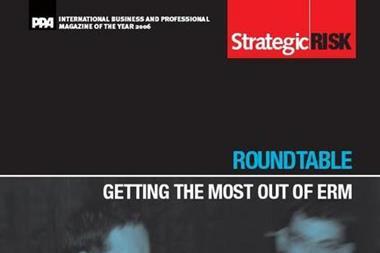Aon's ERM report underscores culture, strategy, resources drive success
Even as government regulators and corporate stakeholders demand companies do more to address and mitigate enterprise-wide risks, only one in 10 companies in the Americas and Europe has fully integrated an enterprise risk management (ERM) strategy, according to new research
The results come as Aon releases its Global Risk Consulting‘s survey of global ERM practices, based on feedback from chief risk officers, risk managers and other senior executives surveyed from among the world’s largest firms.
At the heart of ERM is a comprehensive understanding of the global risks facing an organization, the design of strategies to mitigate those risks and the building of a corporate culture focused on risk management.
According to the research, 83 % of respondents say they are reasonably familiar or very familiar with ERM and its implementation and purpose.
Only one in four organizations say that developing ERM programs is part of their strategic planning process, said the report.
Aon Global Risk Consulting identified corporate culture, strategy and resources as the three key elements of successful ERM programs.
“For businesses to appropriately deal with the risks they face, it is imperative that they communicate the ERM message through all levels of their organizations. Our survey suggests companies are behind: just one in seven say their ERM function is good at communicating that message.
Andrew Tunnicliffe, AGRC’s head of global business development
Stephen Cross, chief executive officer of Aon Global Risk Consulting, commented: “Companies need clear and consistent ERM frameworks in place to appropriately assess and respond to the collective risks that may impact their organizations today. ERM provides the insight investors, management, ratings agencies and other stakeholders need to fully assess a company's risk profile."
Aon said in a release accompanying the research: ‘Marrying corporate culture with ERM increases the likelihood programs will be effective. Those organizations with the most mature ERM programs say corporate culture was entirely or significantly taken into account in its development.‘
One in four respondents said the organization is aware of risk but has not implemented a structured response.
Andrew Tunnicliffe, AGRC’s head of global business development, said: "For businesses to appropriately deal with the risks they face, it is imperative that they communicate the ERM message through all levels of their organizations. Our survey suggests companies are behind: just one in seven say their ERM function is good at communicating that message."
The report found a slightly greater familiarity with ERM in North America; organizations based in the region are less likely than those in Europe to have a dedicated ERM function.

















No comments yet